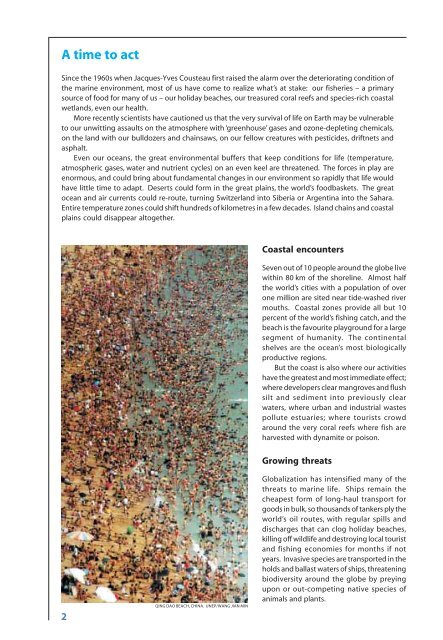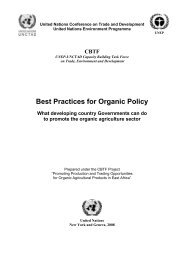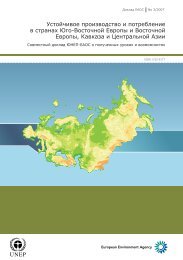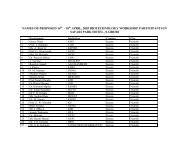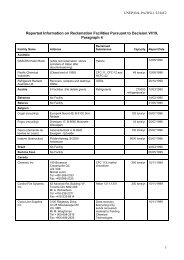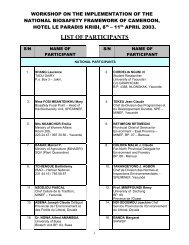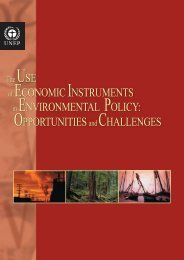Regional Seas: Strategies for sustainable development - UNEP
Regional Seas: Strategies for sustainable development - UNEP
Regional Seas: Strategies for sustainable development - UNEP
You also want an ePaper? Increase the reach of your titles
YUMPU automatically turns print PDFs into web optimized ePapers that Google loves.
A time to act<br />
Since the 1960s when Jacques-Yves Cousteau first raised the alarm over the deteriorating condition of<br />
the marine environment, most of us have come to realize what’s at stake: our fisheries – a primary<br />
source of food <strong>for</strong> many of us – our holiday beaches, our treasured coral reefs and species-rich coastal<br />
wetlands, even our health.<br />
More recently scientists have cautioned us that the very survival of life on Earth may be vulnerable<br />
to our unwitting assaults on the atmosphere with ‘greenhouse’ gases and ozone-depleting chemicals,<br />
on the land with our bulldozers and chainsaws, on our fellow creatures with pesticides, driftnets and<br />
asphalt.<br />
Even our oceans, the great environmental buffers that keep conditions <strong>for</strong> life (temperature,<br />
atmospheric gases, water and nutrient cycles) on an even keel are threatened. The <strong>for</strong>ces in play are<br />
enormous, and could bring about fundamental changes in our environment so rapidly that life would<br />
have little time to adapt. Deserts could <strong>for</strong>m in the great plains, the world’s foodbaskets. The great<br />
ocean and air currents could re-route, turning Switzerland into Siberia or Argentina into the Sahara.<br />
Entire temperature zones could shift hundreds of kilometres in a few decades. Island chains and coastal<br />
plains could disappear altogether.<br />
Coastal encounters<br />
Seven out of 10 people around the globe live<br />
within 80 km of the shoreline. Almost half<br />
the world’s cities with a population of over<br />
one million are sited near tide-washed river<br />
mouths. Coastal zones provide all but 10<br />
percent of the world’s fishing catch, and the<br />
beach is the favourite playground <strong>for</strong> a large<br />
segment of humanity. The continental<br />
shelves are the ocean’s most biologically<br />
productive regions.<br />
But the coast is also where our activities<br />
have the greatest and most immediate effect;<br />
where developers clear mangroves and flush<br />
silt and sediment into previously clear<br />
waters, where urban and industrial wastes<br />
pollute estuaries; where tourists crowd<br />
around the very coral reefs where fish are<br />
harvested with dynamite or poison.<br />
Growing threats<br />
2<br />
QING DAO BEACH, CHINA. <strong>UNEP</strong>/WANG JIAN MIN<br />
Globalization has intensified many of the<br />
threats to marine life. Ships remain the<br />
cheapest <strong>for</strong>m of long-haul transport <strong>for</strong><br />
goods in bulk, so thousands of tankers ply the<br />
world’s oil routes, with regular spills and<br />
discharges that can clog holiday beaches,<br />
killing off wildlife and destroying local tourist<br />
and fishing economies <strong>for</strong> months if not<br />
years. Invasive species are transported in the<br />
holds and ballast waters of ships, threatening<br />
biodiversity around the globe by preying<br />
upon or out-competing native species of<br />
animals and plants.


